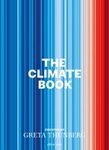About this book
We hear about pieces of ice the size of continents breaking off of Antarctica, rapidly melting glaciers in the Himalayas, and ice sheets in the Arctic crumbling to the sea, but does it really matter? Will melting glaciers change our lives? Absolutely.
The ice ages and the interglacial periods like we live in now are built and destroyed by glaciers. Glaciers hold three quarters of our freshwater, yet we don't have laws to protection them from climate change. Melting glaciers raise the seas, alter global ecosystems, warm our climate and bring on floods that swamp millions of acres of land destroying coastal ecosystems and leaving hundreds of millions homeless. Healthy glaciers help keep our planet cool by reflecting solar heat away from the Earth and provide critical freshwater supply to billions that live within their meltwater runoff basins. But melting glaciers alter ocean temperature, warm the atmosphere and cause havoc to the ocean currents and to the global jet stream, causing inclement weather, prolonged and recurrent droughts, heavy rains and intense, frequent and unpredictable storms. As glaciers melt away, their critical environmental functions and services will wither. And as climate change warms their core, their weakening internal structure will cause a growing number of glacier tsunamis that can send deadly massive ice blocks, rocks, earth and billions of liters of water rushing down mountain valleys that take out anything in their path. It has happened before in the Himalayas, in the Central Andes, in the Rockies and Western Cascades, and in the European Alps and it will happen again. As glaciers melt so do the vast swaths of permafrost environments that thrive in their surroundings, where thawing millenary terrain rich in ice but also in methane gas captured hundreds of thousands of years ago, is now released into the atmosphere intensifying climate change even further.
In his new book Meltdown, Jorge Daniel Taillant takes readers deeper into the cryosphere and connects the dots between climate change, glacier melt and the impacts that receding glacier ice brings to livability on Earth, to our environments and to our neighborhoods. He walks us through the little-known realm of the periglacial environment, a world where invisible subsurface rock glaciers with solid ice cores that will outlive exposed glaciers in our warming climate, but will they suffice to maintain our cryosphere and climate ecology in balance? In two closing chapters Taillant looks at actions that can help stop climate change and save glaciers and also contrasts how society, politics and our leaders have responded to address the COVID-19 pandemic and yet largely failed to address the even larger looming and escalating crisis of climate change.
Meltdown is about glaciers and their unfolding demise during one of the most critical moments of our climate crisis. We may still be in time to save the cryosphere, if we can reconsider glaciers in a whole new light and understand the critical role they play in our own sustainability and if we can awaken to see how through glacier melt, geological ages are changing right before our eyes.
Contents
Acknowledgements
Foreword
Introduction
Chapter 1. And Then There Was Ice
Chapter 2. The Rising Seas
Chapter 3. Do You Drink Glacier Water? Probably
Chapter 4. Glaciers are White, the Ocean is Blue, the Earth is Warming, and So are You!
Chapter 5. A Thawing Earth
Chapter 6. Run! The Mountain is Coming!
Chapter 7. Ocean Currents, Jet Streams, and Polar Bears
Chapter 8. Invisible Glaciers... Will They Save Us?
Chapter 9. A Race to Save Everything
Chapter 10. Why for COVID but Not for Climate?
Bibliography
About the Author
Index
Customer Reviews
Biography
Jorge Daniel Taillant is Founder and Executive Director of the Center for Human Rights and Environment. Born in Argentina, raised in California, and now living in Florida, he has lived and worked around the world to promote sustainability and social justice. Taillant was key to getting the first glacier protection law passed in 2010, and he has developed educational materials about glaciers for children and adults. He is the author of numerous publications on the impacts of mining on glaciers, including his most recent book Glaciers: The Politics of Ice (Oxford University Press, 2015).



































